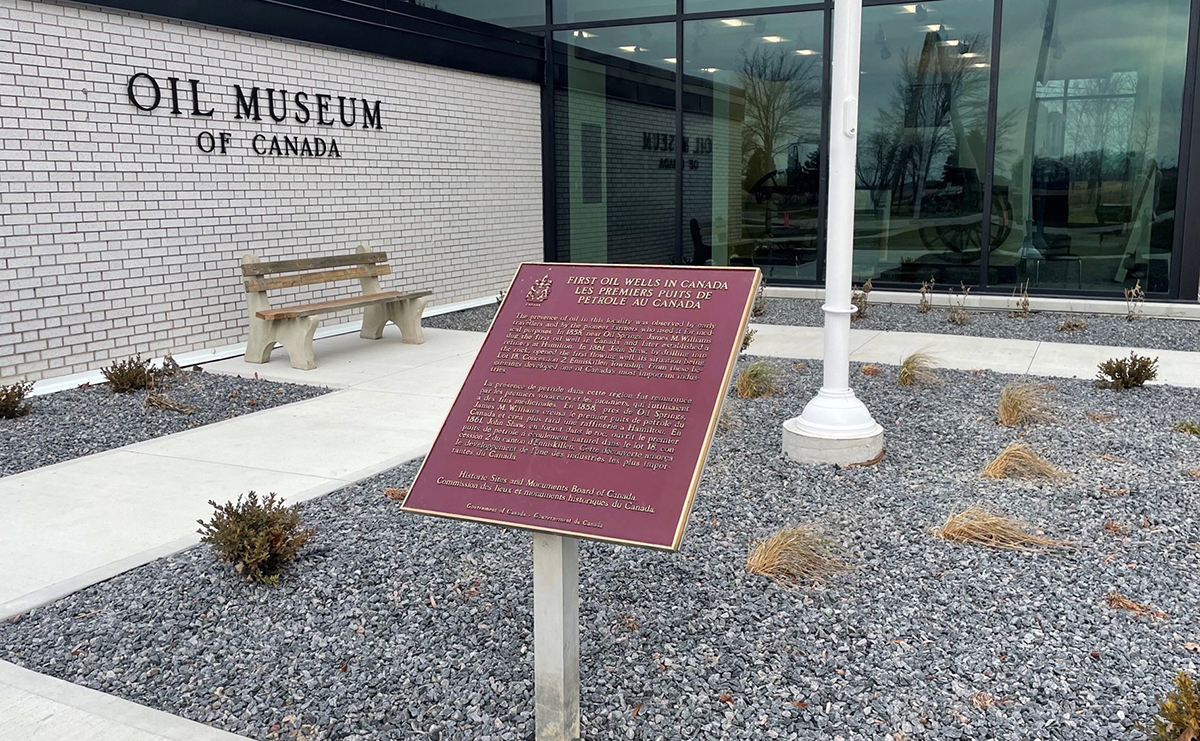National Historic Site Designation
Oil Springs received a National Historic Site designation in 1925 from the Historic Sites and Monuments Board of Canada. The Museum is located on the site of a rare industrial landscape that marks the beginnings of the oil industry in Canada. This site is credited with a handful of national and international achievements. Registration of the world's first petroleum company, first commercial oil well in North America, first commercial oil field in the world, and first oil and gas gushers in Canada, to name a few.

In 2006, the Historic Sites and Monuments Board of Canada cleared up the boundaries of this designation. Its revision now includes all of the original oil field. Both the museum and Fairbank Oil Fields make up this national designation. The first commercial oil well dug by James Miller Williams in 1858 is on the Oil Museum of Canada's grounds. The first gusher struck by John Shaw in 1861 is on the adjacent Fairbank Oil Fields.
In resolving the status of the National Historic Site designation, the report by the Historic Sites and Monuments Board of Canada also notes the historical significance of the first commercial oil field in Canada, as follows:
- the site is a rare industrial landscape possessing a large number of vestiges directly related to the beginning and to the evolution of the oil industry in the latter half of the 19th century in Canada;
- the site contains the first commercial oil well in the world, the first drilled well in Canada, the first gumbeds that were commercially used in the world, and the first gas gusher in Canada;
- the site, where the mining, refining and marketing of petroleum products once took place, had major impacts both financially and technologically not only in Canada but on the development of the oil industry in other countries.
Follow the link below to view the full National Historic Site report.


 Subscribe to this page
Subscribe to this page